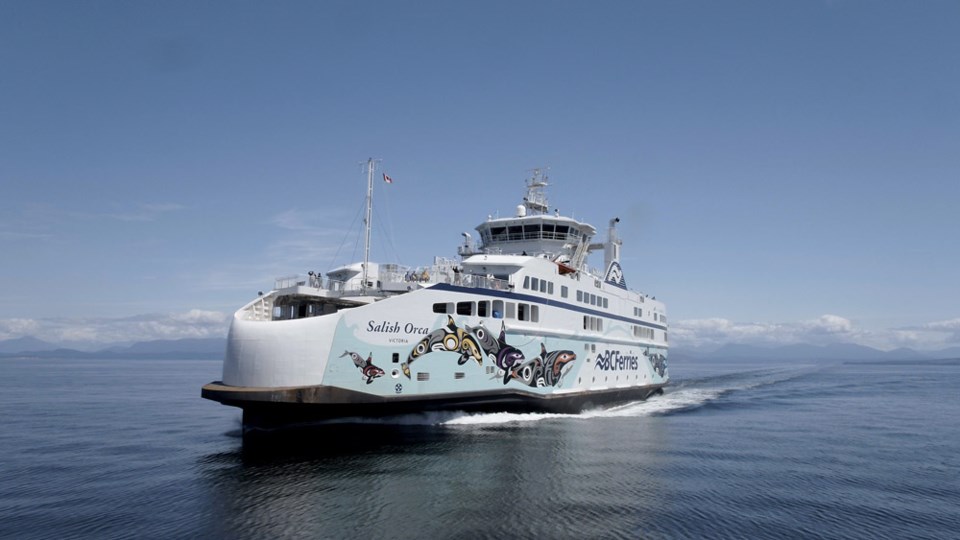Climate change is a global issue. Greenhouse gases (GHGs) don’t recognize borders or legal jurisdictions, so we all need to do our part to reduce emissions. Exporting liquefied natural gas (LNG) for power generation and heating can play a significant role in lowering the use of high-carbon fuels around the world. But natural gas used as transportation fuel can also have a positive environmental impact. Commercial ships and trucks, typically fuelled with diesel and other high-carbon fuels, are among the biggest producers of GHG emissions globally – so they present a massive opportunity for improvement.
And while the need to reduce high-carbon fuels globally is a big challenge, it’s also good news for B.C.: we have an abundant supply of natural gas here, which can be liquefied and used to fuel marine vessels and long-haul trucks.
According to industry research, LNG fuel reduces emissions by about 19% compared with traditional marine fuels like diesel and heavy fuel oil. It’s also less costly than some other lower-carbon fuels, which can save companies a lot of money over the long run. That’s why local companies like BC Ferries and Seaspan are already fuelling ships with FortisBC’s LNG, and bringing more LNG-fuelled vessels into their fleets.
FortisBC collaborated with BC Ferries and Seaspan to develop world-first, exclusive technology to fuel ships via tanker truck delivery on deck. Innovative solutions like this make it easier and more enticing for transportation customers to get on board with LNG.
Seaspan, a prominent Canadian marine transportation company, has two LNG ferries in the water now and has plans to expand its LNG fleet. The company estimates its carbon dioxide reduction at approximately 22% with its use of LNG fuel.
BC Ferries expects to reduce its fuel costs by millions of dollars and reduce its CO2 emissions by 21,500 tonnes annually, the equivalent of taking approximately 4,400 vehicles off the road per year. The conversion of BC Ferries’ two largest ships in the fleet, along with three newly built, natural-gas-fuelled Salish-class vessels, means the company is using a made-in-B.C. fuel supply that reduces environmental impact compared with other, higher-carbon fuels, while also providing financial savings that benefit the company and help keep fares stable for customers.
While the truck-to-ship fuelling method works well for local ferry operators, for transpacific vessels requiring larger transfer volumes, a ship-to-ship method is preferred, using a fuelling (bunkering) vessel filled via land-based infrastructure. That’s where the proposed Tilbury Pacific LNG jetty comes in. It would be built by WesPac, an established midstream company, next to FortisBC’s Tilbury LNG facility in Delta, B.C. This jetty would make it that much easier for ships from around the world calling into the Vancouver Fraser Port Authority (VFPA) – or ships in the Pacific Northwest – to get their LNG fuel, which will encourage more shipping companies to make the switch to LNG and make B.C. their preferred supplier.
The International Maritime Organization (IMO) has set a target to reduce GHG emissions in marine shipping by 50% by 2050, along with an ambitious sulphur emissions cap that will take effect January 1, 2020. This has made LNG even more attractive to domestic and international shipping companies around the world, because it’s one of the options that can help these companies meet the IMO requirements.
Our LNG is among the cleanest in the world because it’s produced with hydroelectricity. In fact, researchers at the University of British Columbia estimate that, based on the province of B.C.’s environmental regulations and electric-powered LNG facilities, LNG produced in B.C. can reduce GHG emissions in marine shipping by 26% more than LNG produced using other production methods.
Switching from conventional marine fuels to LNG offers another benefit: improved air quality. In fact, the same study noted above showed that emissions of nitrogen oxides and sulphur oxides could be reduced by up to 90% using LNG versus heavy fuel oil. While similar reductions can be seen using ultra-low-sulphur diesel, LNG is currently approximately half the cost.
The VFPA has recently joined the SEA/LNG industry coalition aimed at accelerating adoption of LNG as marine fuel, as part of the VFPA’s mission to become the world’s most sustainable port. When B.C. becomes an LNG bunkering hub, it ensures Vancouver’s position as a preferred port of call, which brings a lot of potential economic benefits to the province. It also provides an expanded market for the province’s plentiful natural gas resources.
Providing affordable LNG for the transportation industry is an important part of FortisBC’s Clean Growth Pathway strategy. Expanding LNG marine bunkering and LNG exports are key economic opportunities that can benefit Vancouver, B.C., industry and the environment.



